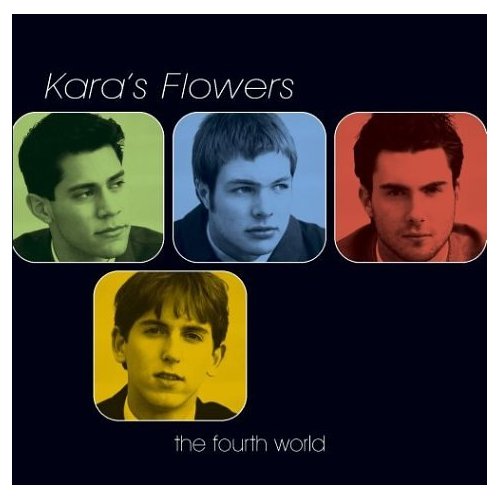Whether you are a lover of the band Maroon 5 or simply a curious reader, thank you for taking the time to visit my site. As this is the first installment in my Maroon 5 webblog, I find it appropriate to provide you with an introduction to the band. This pop/rock group is personally my favorite band, and I hope that after reading my blog you too will gain an appreciation for their music. Some of you, even avid listeners of Maroon 5, may not know that the band was originally created under the name of Kara’s Flowers in 1995 by singer Adam Levine, guitarist Jessie Carmichael, bass guitarist Mickey Madden, and drummer Ryan Dusick. The group was your typical high school band, playing out of garages and basements in Los Angeles and Malibu, California until they were signed by Reprise Records. Kara’s Flowers was heavily influenced both in music and fashion by bands like Nirvana, Pearl Jam, and the Beatles, and, in 1997, they released their very first album titled The Fourth World.
Unfortunately, though, due to poor response from listeners, Reprise chose to drop Kara’s Flowers. The band came close to falling apart, but after Adam and Jessie left and returned from a semester at college in Long Island, the band underwent a similar transformation. James Valentine, a talented guitarist joined the band, Jesse switched from playing guitar to keyboard, and Kara’s Flowers became Maroon 5. The true meaning behind the band’s name is a secret, however, and only band members and, interestingly, Billy Joel know the meaning behind the words. Maroon 5 has gone on to become perhaps one of the most popular bands of the 2000s. Although members have been lost and gained along the way (Ryan Dusick was replaced by Matt Flynn after an injury and PJ Morton is currently standing in for Jessie Carmichael as he pursues suspended plans), the band has seen incredible success over the years. They have won three Grammy Awards, two People’s Choice Awards, one World Music Award, and countless other honors and nominations. Recently, beginning with Adam Levine’s recording of “Stereo Hearts” in 2011 with Gym Class Heroes, Maroon 5 has also seen a revitalization in their music style by choosing to work with other writers. As this blog continues over the course of this semester, I will explore more about the band’s members, songs, and collaborations while trying to make the site as interactive as possible for readers. Thank you again for reading my blog, and remember to check in once in a while for more fun and exciting facts about one of the greatest bands of our generation! Also, be sure to check out “Soap Disco” by Kara’s Flowers.
Citations:
http://www.allmusic.com/artist/karas-flowers-mn0000855690/biography
(Summary of the band Kara’s Flowers)
(Summary of the band Maroon 5 from the point of view of bass guitarist Mickey Madden)
http://www.aceshowbiz.com/celebrity/maroon_5/awards.html
(Summary of Maroon 5 awards and nominations)
Date of publication of “Stereo Hearts (feat. Adam Levine)” released by Gym Class Heroes taken from iTunes
